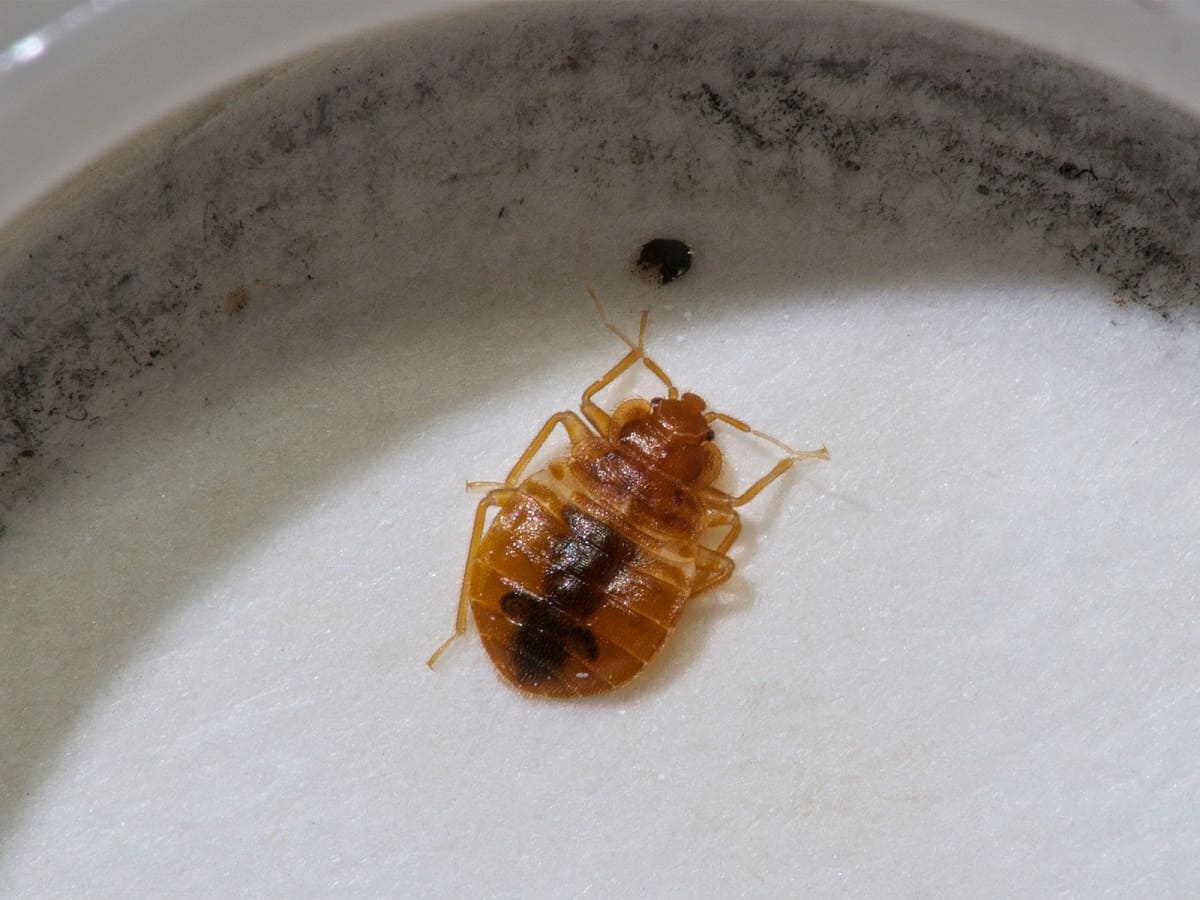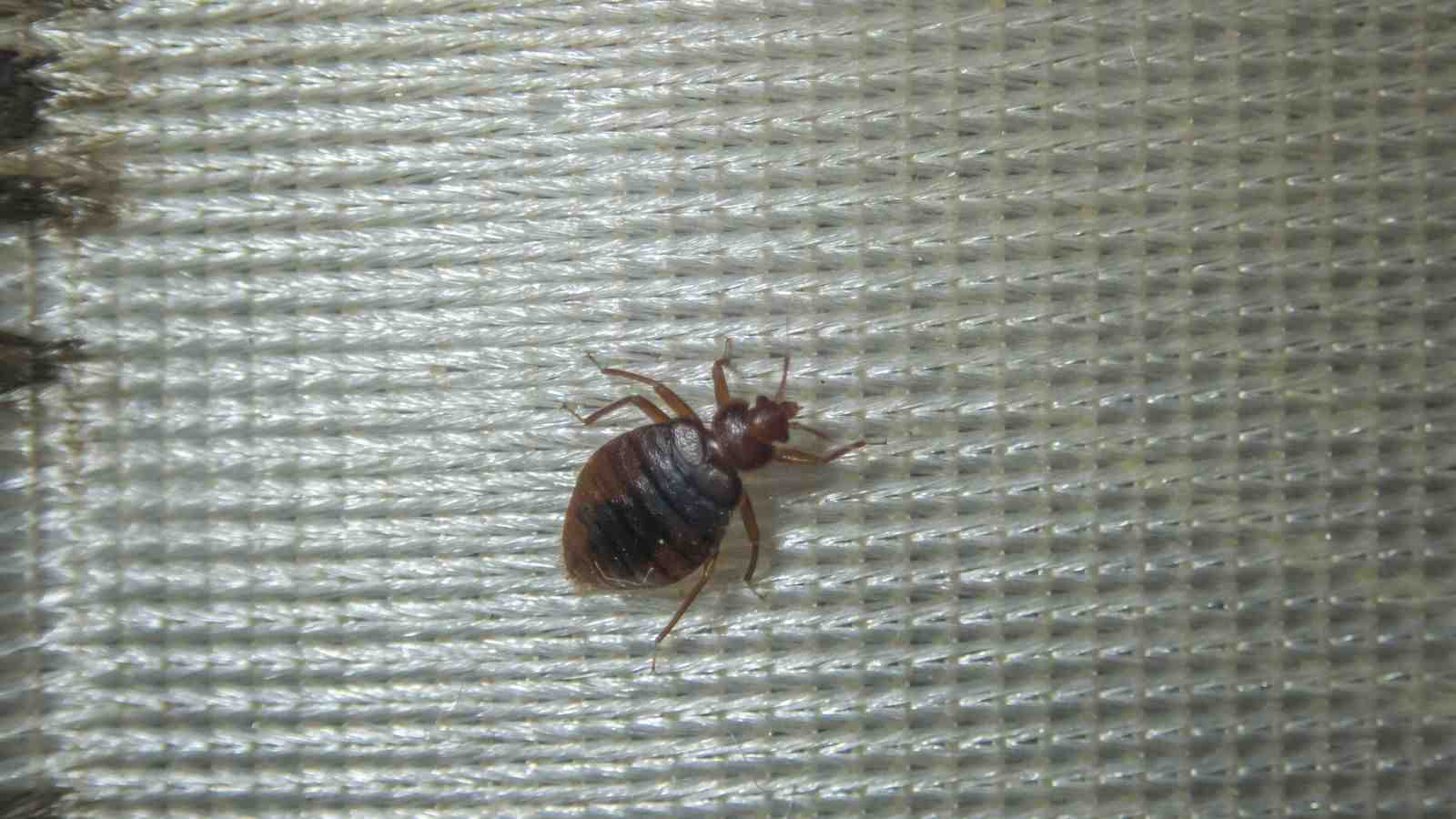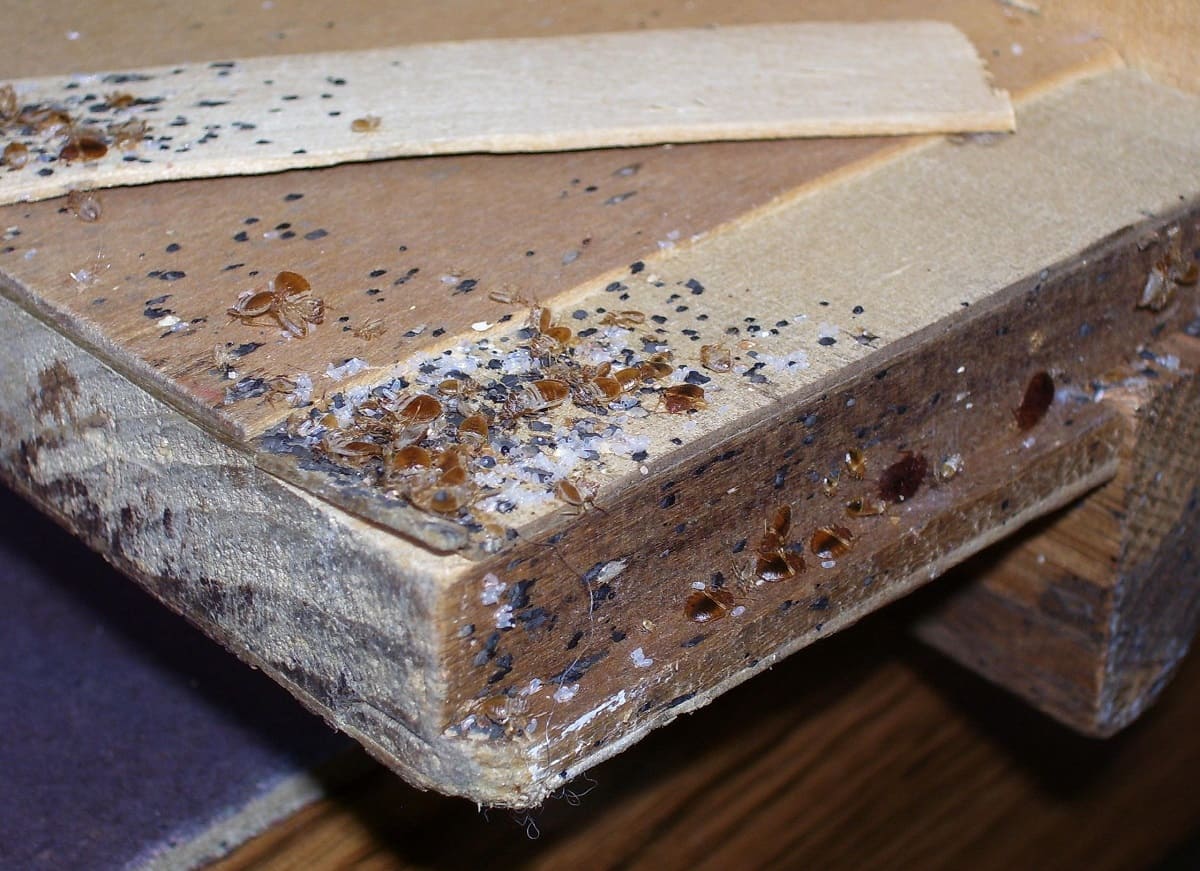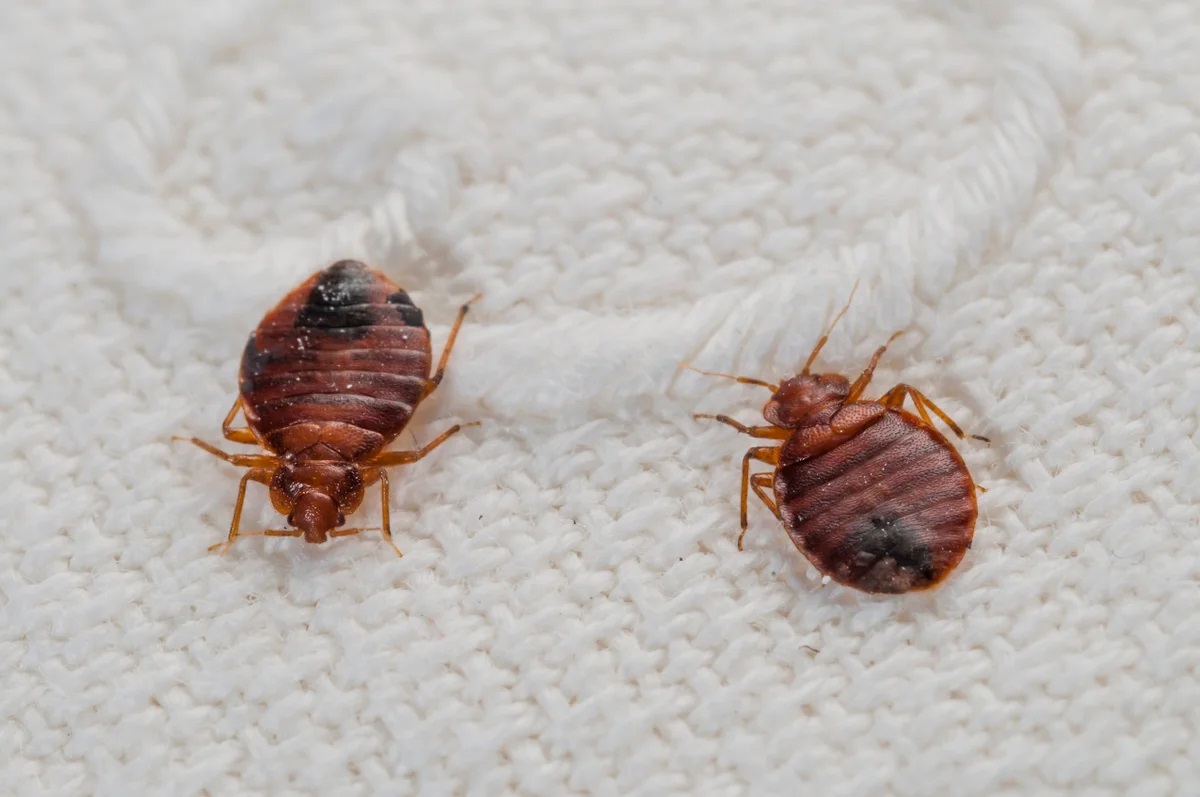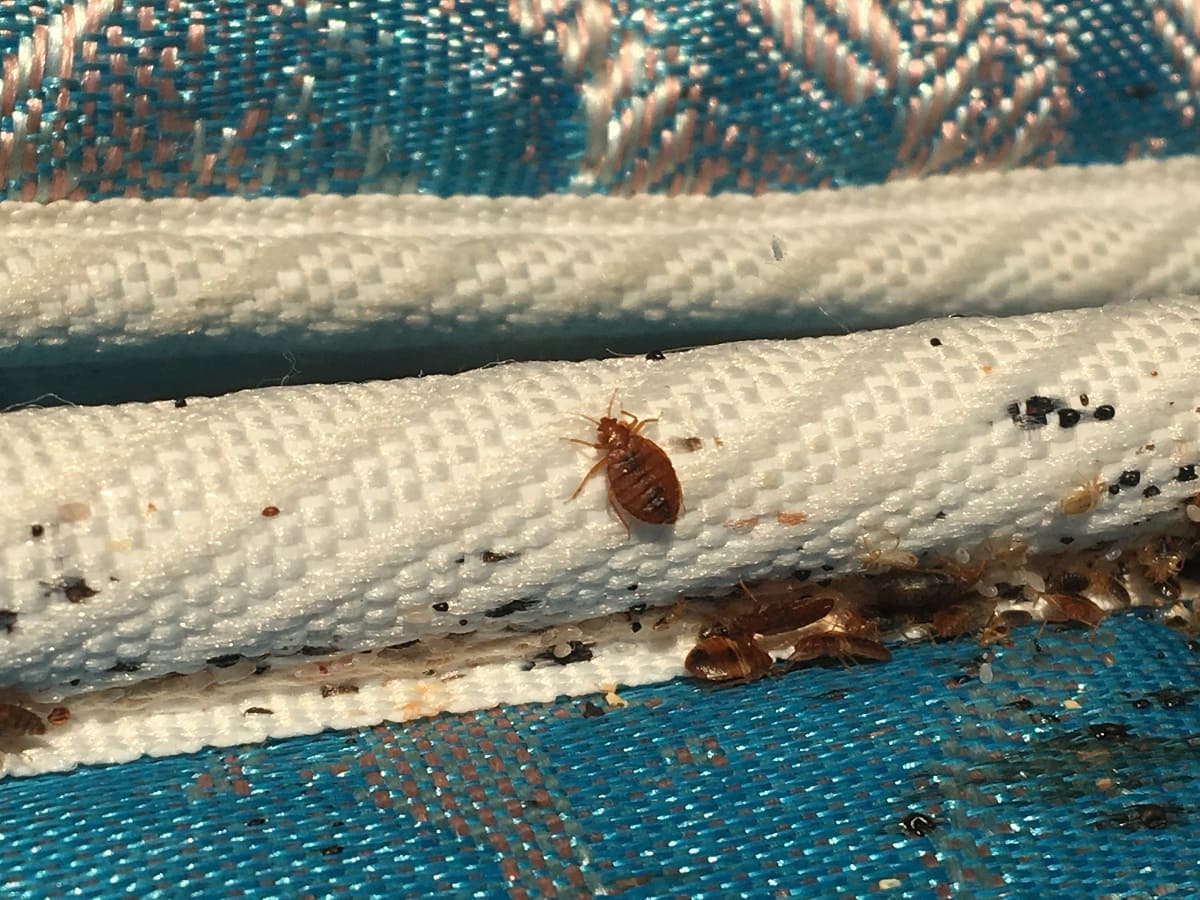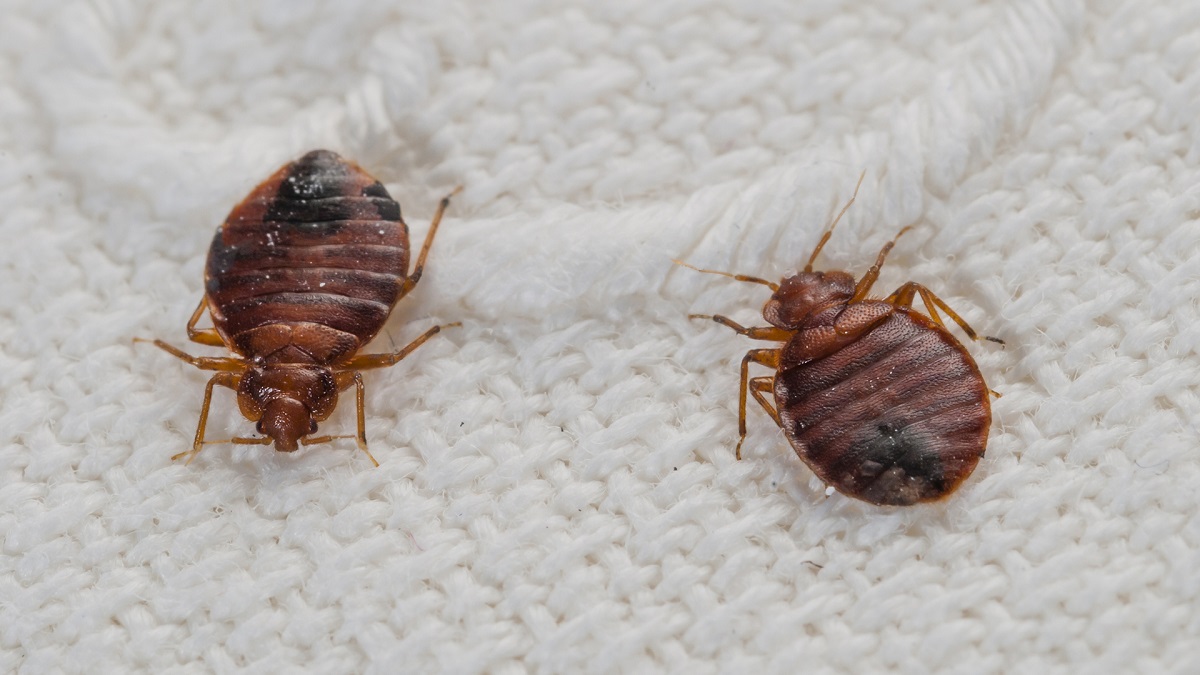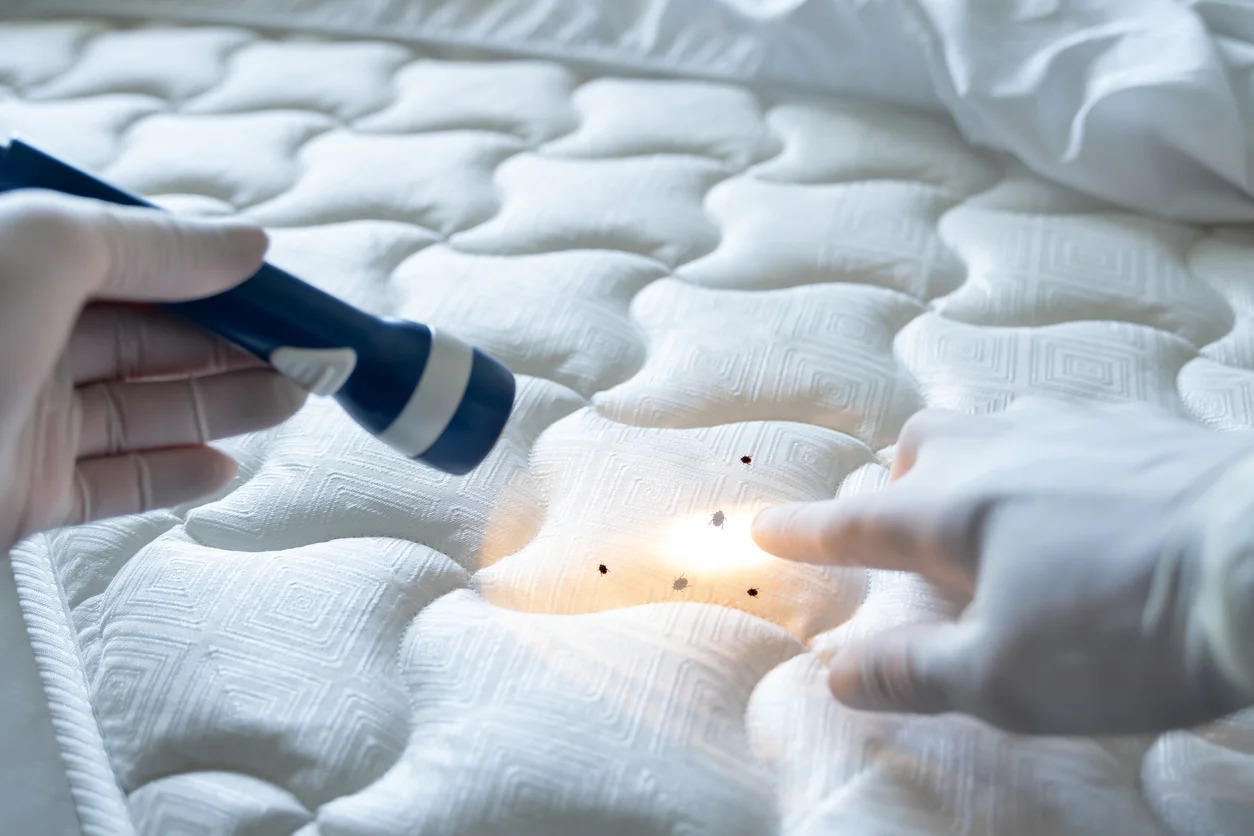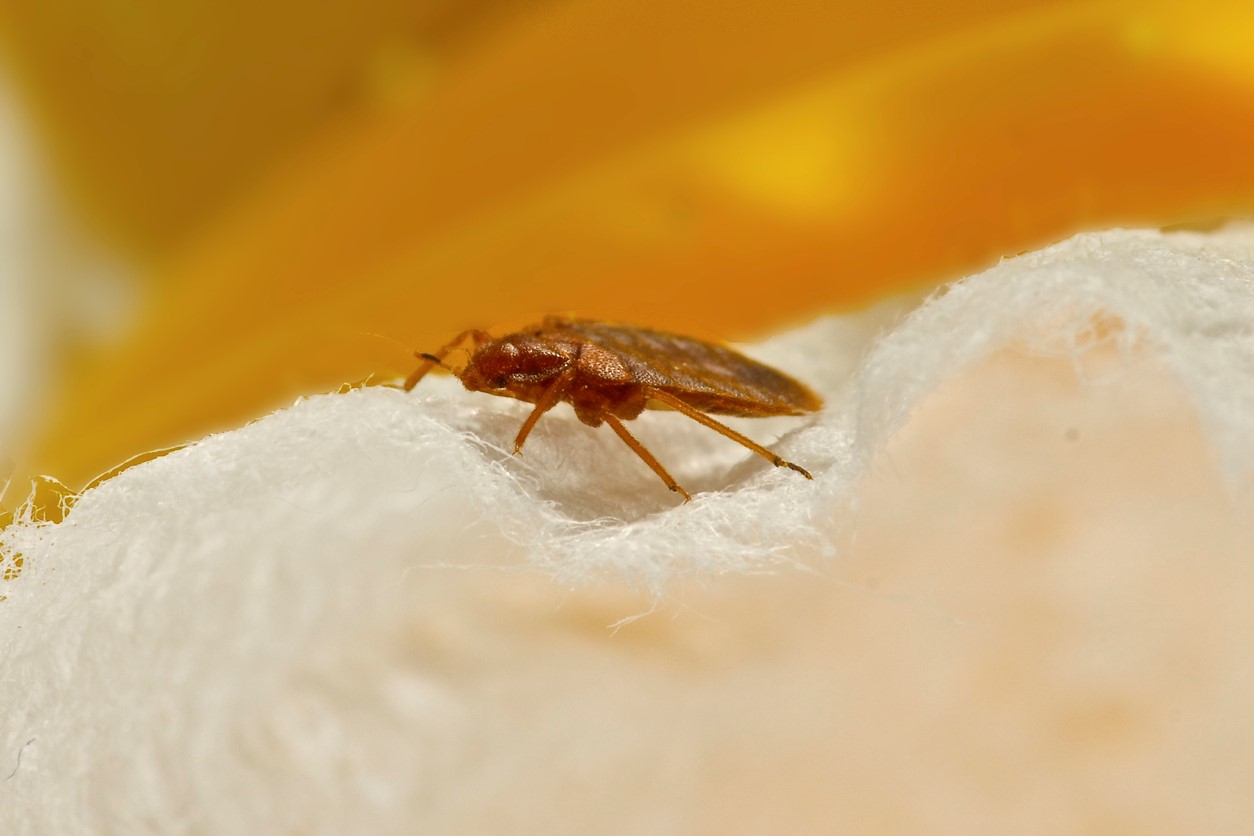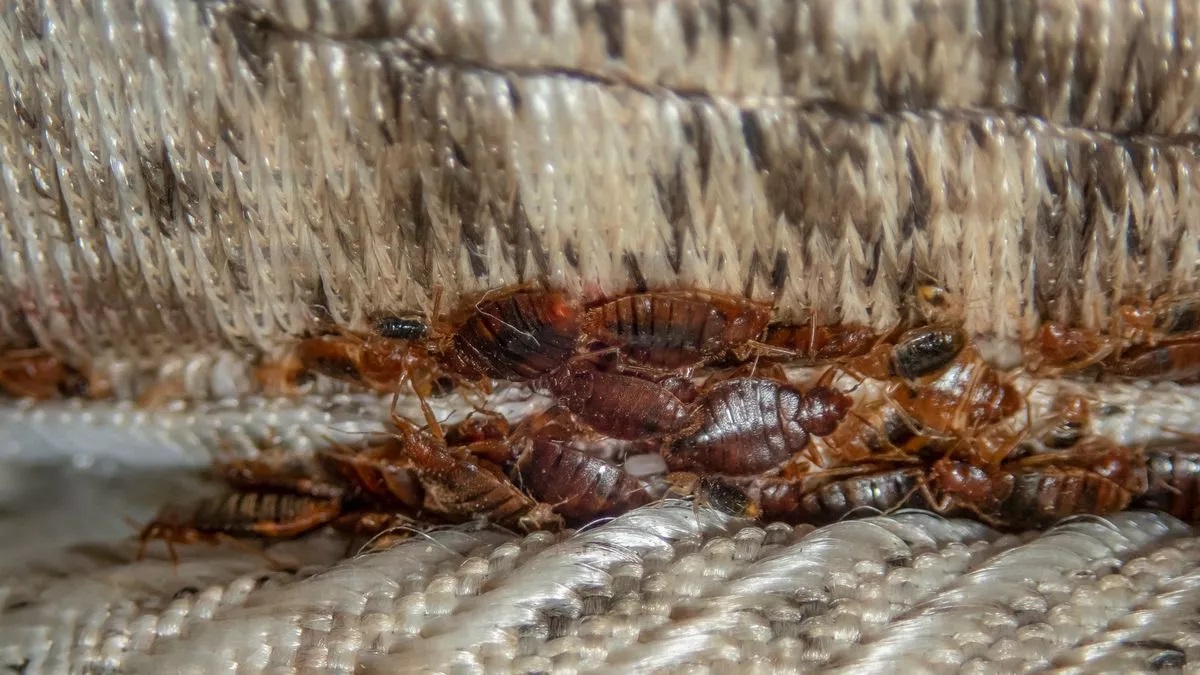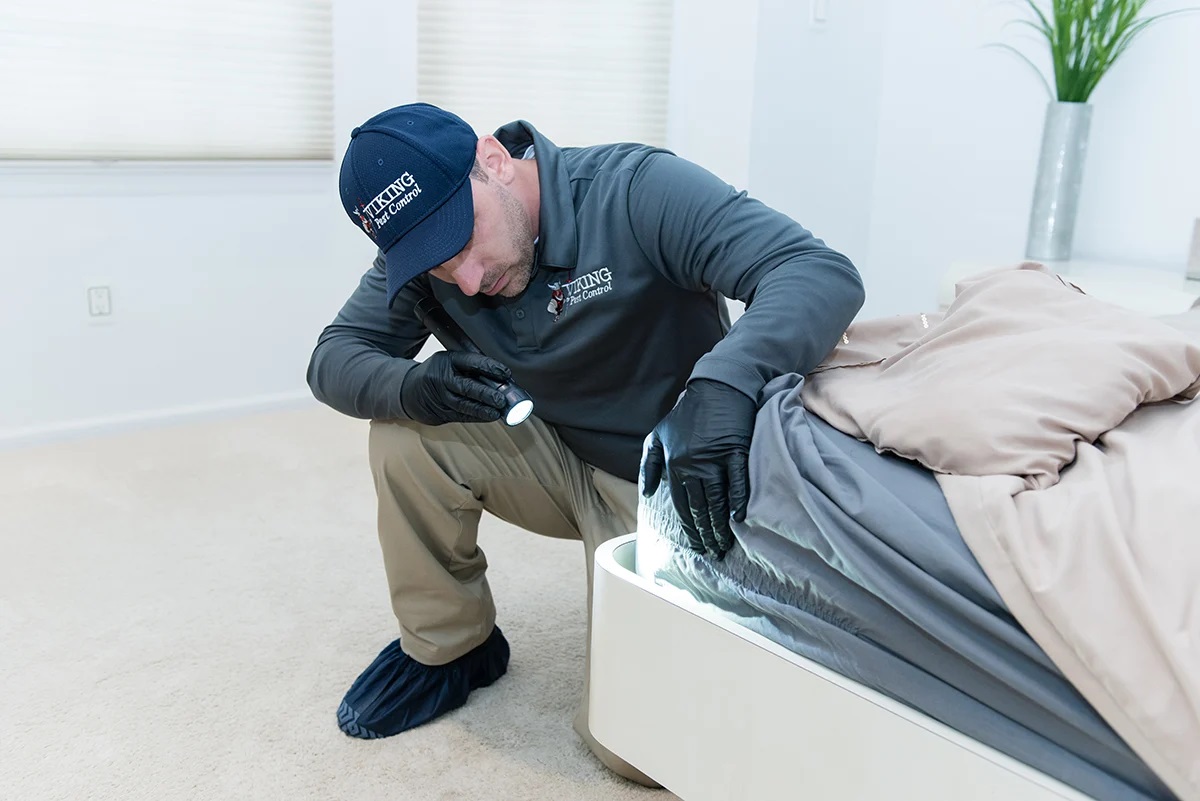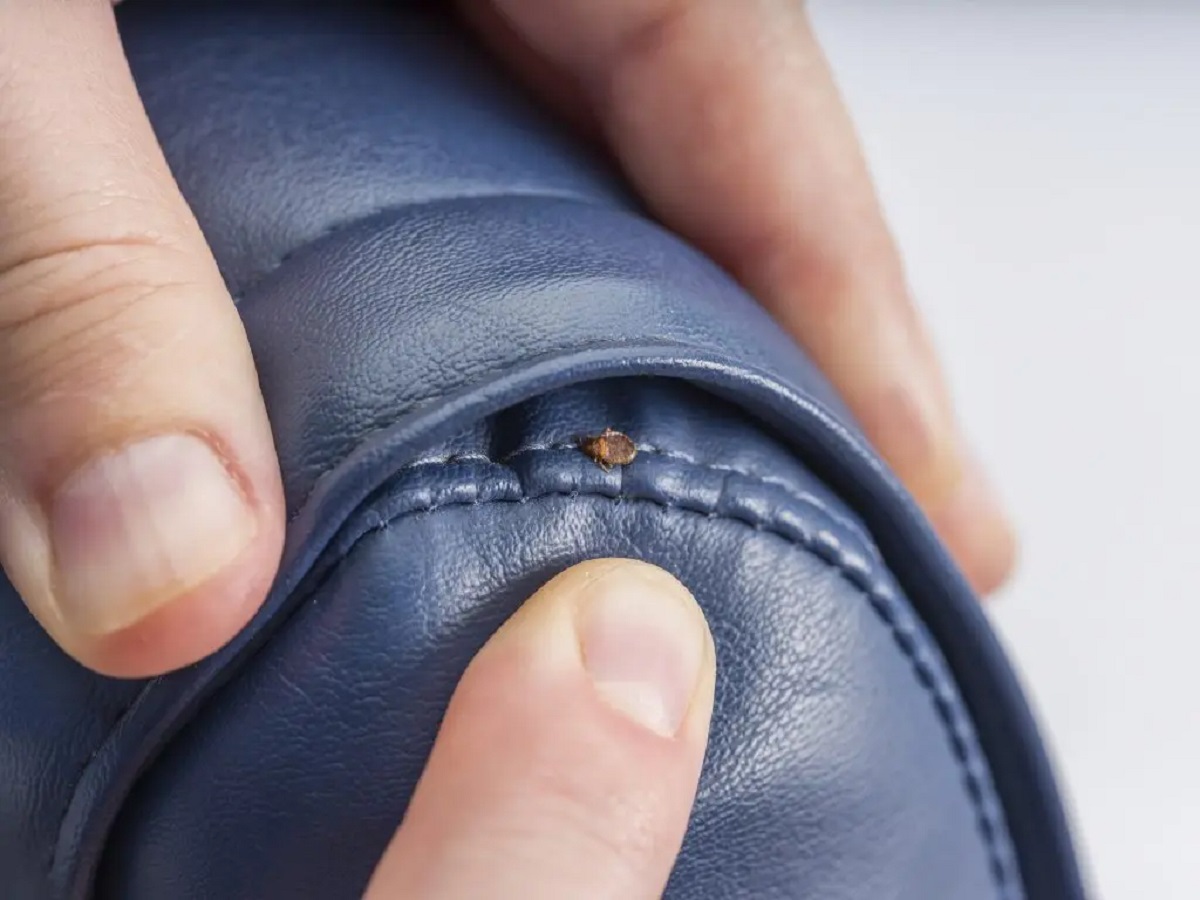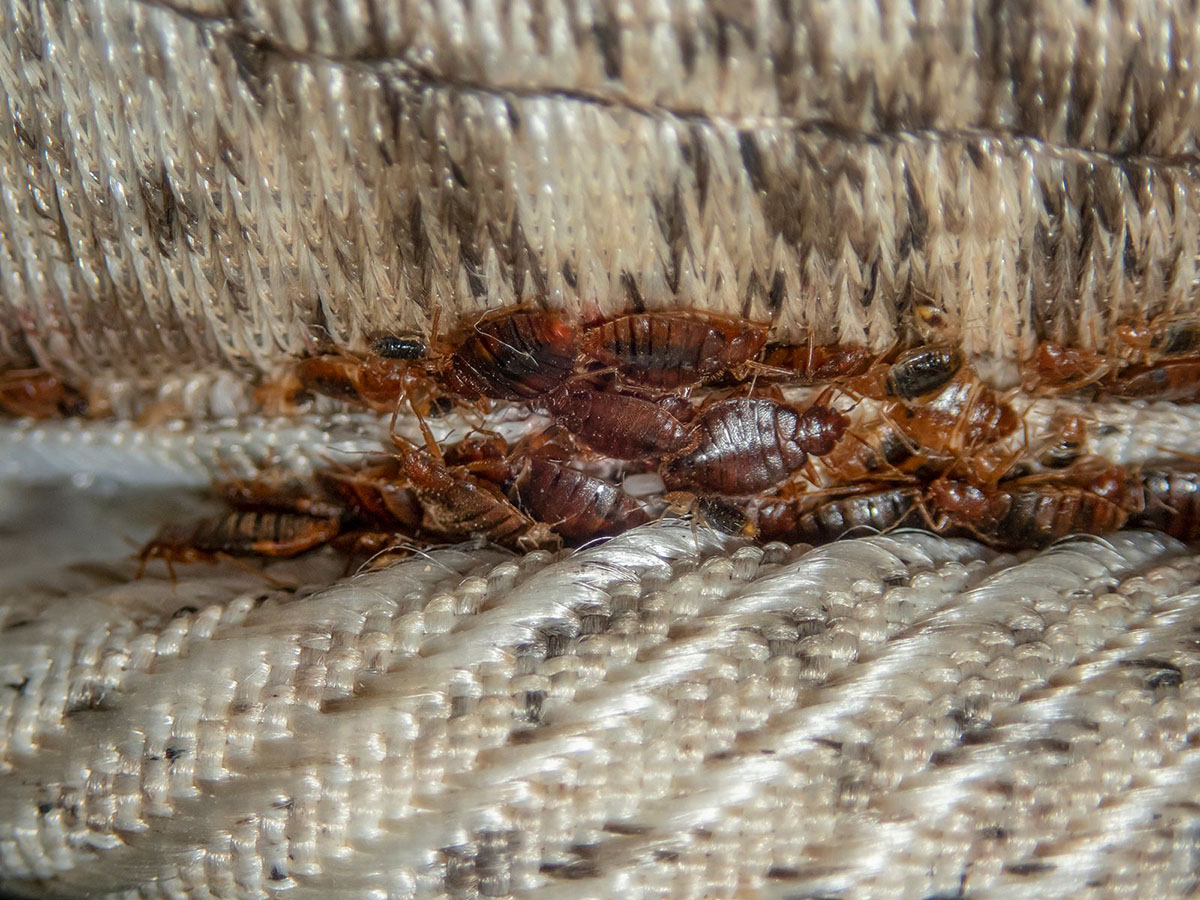Home>Furniture>Bedroom Furniture>How To Prevent Bed Bugs
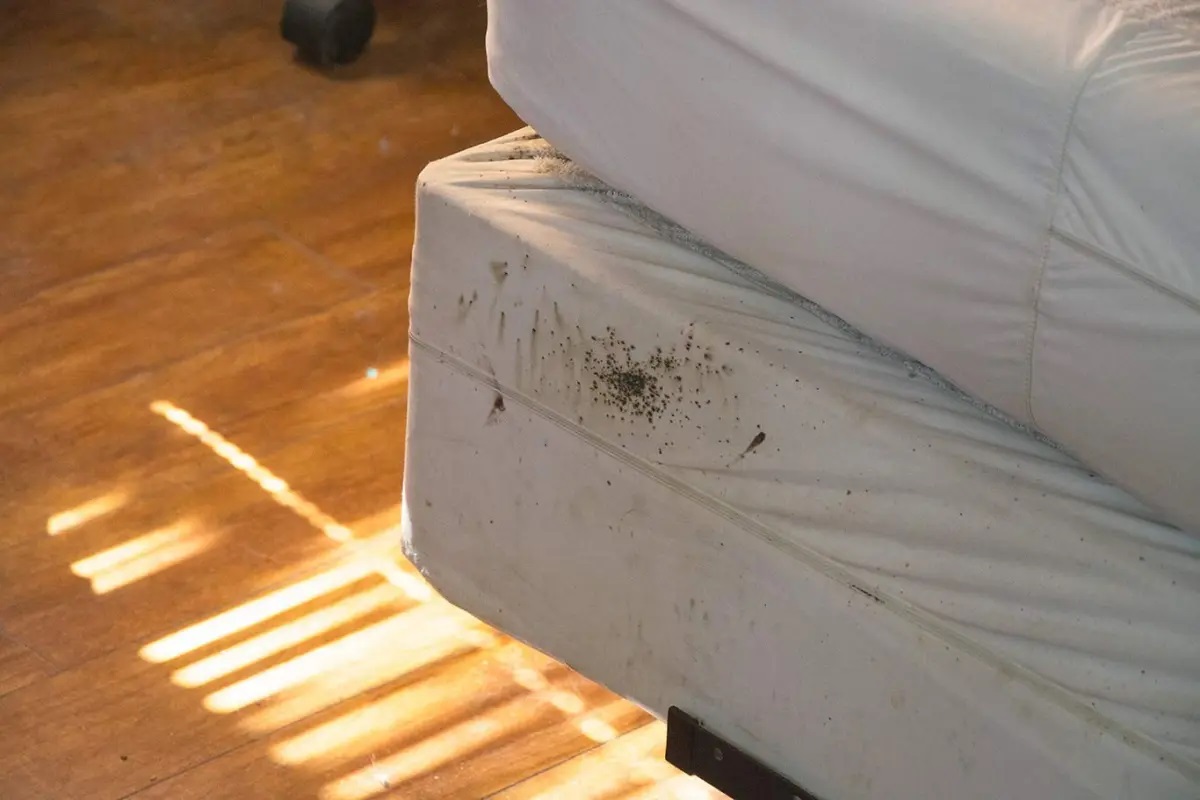

Bedroom Furniture
How To Prevent Bed Bugs
Modified: March 6, 2024
Learn how to prevent bed bugs in your bedroom furniture and keep your home pest-free. Find effective solutions to protect your furniture and sleep peacefully.
(Many of the links in this article redirect to a specific reviewed product. Your purchase of these products through affiliate links helps to generate commission for Storables.com, at no extra cost. Learn more)
Introduction
Welcome to our comprehensive guide on how to prevent bed bugs. Bed bugs are pesky little insects that can cause significant discomfort and annoyance. They can infest your bedroom furniture and make it difficult for you to have a good night’s sleep. But fear not! In this article, we will delve into the world of bed bugs, their signs of infestation, and most importantly, effective ways to prevent them from taking up residence in your bedroom.
Before we dive into the prevention measures, let’s take a moment to understand what bed bugs are and why it’s essential to keep them at bay. Bed bugs are small, wingless insects that feed on human blood. They are usually brownish in color and can be as small as an apple seed. Despite their name, bed bugs can be found in various places, including mattresses, furniture, curtains, and even clothes. They are excellent hitchhikers and can easily travel from one place to another through luggage, second-hand furniture, or clothing.
One of the most challenging aspects of dealing with bed bugs is that they are incredibly elusive and can go unnoticed for an extended period. However, early detection is vital to prevent a full-blown infestation. Therefore, being aware of the signs of a bed bug infestation is crucial. We will discuss these signs in detail in the next section.
Preventing bed bugs requires a multi-faceted approach. It involves regular cleaning and maintenance, decluttering and organizing your living space, sealing potential entry points, and taking precautions while traveling. Additionally, there are specific bed bug-proof products available in the market that can provide an added layer of protection for your bedding.
In the following sections, we will explore each of these preventive measures in detail. By implementing these strategies, you can significantly reduce the risk of bed bug infestations and ensure a peaceful and bug-free sleep environment. So, let’s get started!
Key Takeaways:
- Keep your bedroom bug-free by regularly cleaning, decluttering, and using bed bug-proof covers. Inspect second-hand items and be cautious while traveling to prevent infestations.
- Prevent bed bugs by sealing entry points, avoiding hotspots, and inspecting hotel rooms. Stay vigilant and take immediate action if you suspect an infestation.
Read more: 8 Tips to Prevent or Control Bed Bugs
Understanding Bed Bugs
Before we delve into the prevention measures, it’s crucial to have a good understanding of bed bugs. By knowing more about these pesky insects, you will be better equipped to prevent and deal with infestations.
Bed bugs are small, parasitic insects that feed on the blood of humans and animals. Despite their name, they are not specific to beds – they can be found in various places, including furniture, baseboards, electrical outlets, and even clothing. These nocturnal creatures are excellent at hiding and can squeeze into tiny cracks and crevices, making them difficult to detect.
Bed bugs are expert hitchhikers, which means they can easily travel from one place to another by attaching themselves to luggage, clothing, or second-hand furniture. This is why it’s crucial to remain vigilant and take preventive measures to avoid bringing them into your home.
Although bed bugs are not known to transmit diseases, their bites can cause itchiness, redness, and allergic reactions in some individuals. Furthermore, the psychological impact of living with a bed bug infestation can be significant, causing stress, anxiety, and lack of sleep.
Bed bug infestations can be challenging to eradicate, so prevention is key. By understanding their behavior and habits, you can implement effective strategies to keep these unwanted guests at bay.
Bed bugs are attracted to warmth and carbon dioxide, which is why they often target areas near their hosts’ sleeping or resting spots. They can survive for several months without feeding, making them resilient and difficult to eliminate.
It’s important to note that anyone can get bed bugs – cleanliness or socioeconomic status has nothing to do with it. They are opportunistic pests that can infest any space, regardless of how clean or well-maintained it is.
Now that we have a better understanding of bed bugs and their habits, let’s move on to the next section, where we will explore the signs of a bed bug infestation. Early detection is crucial for effective prevention and control!
Signs of Bed Bug Infestation
Identifying the signs of a bed bug infestation is crucial in order to take prompt action and prevent the problem from escalating. Here are some common signs to look out for:
- Bite marks: Bed bugs typically feed on exposed areas of skin while their victims are sleeping. Their bites often result in itchy, red welts or small, raised bumps. The bites are usually in a linear pattern or clustered together.
- Blood stains: After feeding, bed bugs may leave behind tiny bloodstains on your sheets or pillowcases. These stains can appear as red or rust-colored smears.
- Dark spots or stains: Bed bugs produce dark excrement, which can leave behind small dark spots on your bedding or mattress. These spots are often found in clusters or along the seams of the mattress.
- Visible bugs or eggshells: Inspect your mattress, furniture, and other hiding spots for live bed bugs or their discarded exoskeletons (shells).
- Musty odor: In severe infestations, a sweet, musty odor may be present, emitted by bed bugs’ scent glands.
It’s important to note that not everyone reacts to bed bug bites, so the absence of bite marks does not necessarily indicate that you don’t have an infestation. Additionally, bed bugs are skilled at hiding in cracks and crevices, making them difficult to spot. Regular inspections are crucial to catch an infestation early on.
If you suspect that you have a bed bug problem, it’s recommended to contact a professional pest control expert. They have the knowledge and experience to accurately identify and treat bed bug infestations effectively.
Now that you know how to identify signs of a bed bug infestation, let’s move on to the next section, where we will discuss how to prepare your bedroom and prevent bed bugs from taking up residence in the first place.
Preparing for Bed Bug Prevention
Prevention is the key to keeping bed bugs at bay and ensuring a peaceful sleep environment. By taking proactive measures and creating a bed bug-resistant environment, you can greatly reduce the chances of an infestation. Here are some steps you can take to prepare for bed bug prevention:
- Educate yourself: Learn about bed bug prevention, signs of infestation, and effective treatment methods. The more you know, the better equipped you’ll be to prevent and address any potential issues.
- Inspect second-hand items: Before bringing home any used furniture, clothing, or other items, carefully inspect them for signs of bed bugs. Pay close attention to seams, crevices, and folds. If you spot any signs, avoid taking the item home.
- Encase your mattress and pillows: Invest in bed bug-proof mattress and pillow covers. These covers are designed to encase your mattress and pillows entirely, making it difficult for bed bugs to infest them. Be sure to choose covers that are specifically labeled as bed bug-proof.
- Clear clutter: Bed bugs love clutter as it provides hiding spots. Keep your living space clean and decluttered to minimize potential hiding places for bed bugs.
- Seal cracks and crevices: Inspect and seal any cracks or crevices in your walls, baseboards, and furniture. This will eliminate potential entry points for bed bugs.
- Minimize hiding spots: Reduce the number of places bed bugs can hide by opting for minimalist furniture with fewer cracks and crevices.
- Keep your bedroom tidy: Regularly vacuum your bedroom, paying close attention to the areas near your bed and furniture. Dispose of the vacuum bag or empty the canister outside to prevent any trapped bed bugs from re-infesting your space.
Following these preparation steps will set the foundation for effective bed bug prevention. In the upcoming sections, we will explore additional preventive measures that will help ensure a bed bug-free environment for you to enjoy your sleep.
Regular Cleaning and Maintenance
Regular cleaning and maintenance are essential in preventing bed bug infestations. By keeping your bedroom and surrounding areas clean, you can minimize potential hiding spots and detect any signs of bed bugs early on. Here are some cleaning and maintenance tips to incorporate into your routine:
- Vacuum regularly: Vacuum your bedroom and furniture at least once a week. Pay close attention to areas near your bed, including the mattress seams, bed frame, headboard, and baseboards. Use a vacuum with a HEPA filter to ensure proper containment of any bed bugs or eggs that may be present.
- Steam clean: Using a steam cleaner on your mattress, furniture, and other upholstery can help eliminate any bed bugs or eggs that may be hiding. The high temperature of the steam can effectively kill these pests.
- Clean bedding: Wash your bedding, including sheets, pillowcases, and blankets, in hot water regularly. The high temperature will help kill any bed bugs or eggs that may be present. Dry your bedding using the highest heat setting recommended for the fabric.
- Inspect luggage and clothing: After returning from a trip, thoroughly inspect your luggage and clothing for any signs of bed bugs. If possible, wash your clothes in hot water and tumble dry on a high heat setting to eliminate any potential bed bugs.
- Remove clutter: Keep your bedroom free of clutter as much as possible. Bed bugs love to hide in cluttered areas, so regular decluttering will minimize their potential hiding spots.
In addition to regular cleaning, it’s important to be vigilant and monitor your bedroom for any signs of bed bugs. Keep an eye out for bites, blood stains, dark spots, and any visible bugs or eggshells. Early detection is key in preventing a full-blown infestation.
By incorporating these cleaning and maintenance practices into your routine, you’ll create a less attractive environment for bed bugs, reducing the risk of infestation. In the next section, we’ll explore the importance of decluttering and organizing your living space as an additional preventive measure.
Read more: How To Store Rice To Prevent Bugs
Decluttering and Organizing
Decluttering and organizing your living space is not only beneficial for maintaining a clean and tidy environment, but it also plays a crucial role in preventing bed bug infestations. Bed bugs thrive in cluttered areas as it provides them with numerous hiding spots. By minimizing clutter and creating an organized space, you make it more challenging for these pests to establish themselves. Here are some tips to help you declutter and organize your living space:
- Start small: Begin decluttering one area at a time. It can be overwhelming to tackle your entire living space at once, so start with a specific room or even just a corner.
- Purge unwanted items: Sort through your belongings and get rid of items you no longer need or use. Be ruthless and ask yourself if each item serves a purpose or brings you joy. Donate or throw away what you no longer need or want.
- Organize with storage solutions: Utilize storage solutions such as bins, containers, and shelves to neatly organize your belongings. Opt for containers with tight-fitting lids to prevent bed bugs from gaining access to your items.
- Keep floors clear: Avoid storing items directly on the floor, especially in storage areas like basements or closets. Elevate items on shelves or use plastic storage pallets to create a barrier between your belongings and the floor.
- Seal unused items: If you have items that you rarely use, consider sealing them in airtight plastic bags or containers. This extra layer of protection can prevent bed bugs from infiltrating these items.
By decluttering and organizing your living space, you not only create a more aesthetically pleasing and functional environment but also reduce the number of potential hiding spots for bed bugs. Additionally, maintaining an organized space makes it easier to detect any signs of infestation early on, allowing you to take swift action.
In the next section, we will discuss the importance of sealing potential entry points as another preventive measure against bed bugs.
Sealing Entry Points
Sealing potential entry points in your home is an important step in preventing bed bug infestations. Bed bugs are elusive creatures that can squeeze through incredibly small gaps and cracks, making it essential to seal off any potential access points. By blocking their entry, you can significantly reduce the likelihood of bed bugs making their way into your living space. Here are some key areas to focus on when it comes to sealing entry points:
- Inspect walls and baseboards: Carefully examine the walls and baseboards in your home for any cracks or crevices. Seal these gaps using caulk or putty to eliminate potential entry points for bed bugs.
- Seal electrical outlets and switch plates: Bed bugs can enter your home through electrical outlets and switch plates. Use outlet and switch plate covers with integrated sealants or apply caulk around the edges to prevent their entry.
- Check windows and doors: Ensure that windows and doors are properly sealed to prevent bed bugs from entering. Use weatherstripping or door sweeps to close any gaps. Pay special attention to the area around the windows and the bottom of doors.
- Inspect and seal cracks in furniture: Examine your furniture, especially wooden pieces, for any cracks, gaps, or loose upholstery. Repair or seal these openings to prevent bed bugs from hiding or laying eggs inside.
- Seal gaps in floorboards: Inspect your flooring, particularly hardwood or laminate, for any gaps between floorboards. Fill these gaps with wood putty or other suitable sealants to eliminate potential entry points.
Taking the time to thoroughly inspect and seal these entry points is an effective proactive measure in preventing bed bug infestations. By sealing off their potential access, you create a physical barrier that makes it harder for these pests to invade your living space.
While sealing entry points is crucial, it’s also important to monitor your home regularly for any signs of bed bugs. In the next section, we will discuss the use of bed bug-proof mattress and pillow covers as an additional preventive measure.
To prevent bed bugs, regularly vacuum and clean your home, inspect secondhand furniture before bringing it inside, and use a protective cover on your mattress and box spring.
Using Bed Bug-Proof Mattress and Pillow Covers
One effective measure in preventing bed bug infestations is the use of bed bug-proof mattress and pillow covers. These specially designed covers create a protective barrier around your bedding, making it difficult for bed bugs to infest your mattress and pillows. Here are the key benefits and steps to consider when using bed bug-proof covers:
Benefits of bed bug-proof covers:
- Prevents bed bug infestation: The primary purpose of these covers is to stop bed bugs from entering and residing in your mattress and pillows. The tightly woven fabric acts as a physical barrier, preventing bed bugs from accessing potential hiding spots.
- Traps existing bed bugs: If you already have bed bugs in your mattress or pillows, using these covers can trap them inside, preventing them from biting you and making it easier to detect and exterminate the infestation.
- Helps with identification and treatment: By encasing your mattress and pillows with bed bug-proof covers, you create a controlled environment that makes it easier to identify any signs of bed bug activity. If any bed bugs are present, they will be confined to the covers, making treatment more targeted and effective.
- Protects against allergens: Bed bug-proof covers can also provide protection against allergens such as dust mites, pet dander, and pollen, helping to alleviate allergy symptoms and improve overall sleep quality.
Steps to using bed bug-proof covers:
- Choose high-quality covers: Look for mattress and pillow covers that are specifically designed to be bed bug-proof. Ensure they are made of a durable, tightly woven fabric that bed bugs cannot penetrate.
- Encase your mattress: Start by completely covering your mattress with the bed bug-proof cover. Ensure it fits snugly and zips securely, leaving no gaps for bed bugs to enter or escape.
- Cover your pillows: Encase each pillow with a bed bug-proof cover, just like you did with the mattress. Make sure the covers are tightly secured and provide complete coverage.
- Regularly inspect and maintain the covers: Periodically check the covers for any signs of wear or damage. If you notice any holes or tears, promptly patch or replace the covers to ensure continued protection.
Using bed bug-proof mattress and pillow covers is an effective strategy in preventing bed bug infestations and protecting your sleeping area. These covers create a barrier that helps keep your mattress and pillows free from bed bugs, allowing you to sleep with peace of mind. In the following sections, we will discuss additional preventive measures to keep in mind, such as regular vacuuming and laundering of bedding.
Vacuuming and Laundering Bedding Regularly
Vacuuming and laundering your bedding regularly is an essential part of bed bug prevention and maintenance. These practices help to remove any potential bed bugs, their eggs, and other debris that may have accumulated over time. Here are the steps to effectively vacuum and launder your bedding:
Vacuuming:
- Choose a vacuum with a HEPA filter: A vacuum cleaner with a High-Efficiency Particulate Air (HEPA) filter is recommended for efficient removal of bed bugs and their eggs.
- Vacuum the mattress: Start by vacuuming the entire surface of your mattress, paying close attention to the seams, crevices, and tufted areas where bed bugs often hide. Use a crevice tool to get into hard-to-reach spots.
- Vacuum the bed frame and headboard: Vacuum all sides and corners of the bed frame and headboard, as these areas can also harbor bed bugs. Be thorough in your approach to ensure complete removal of any potential pests.
- Vacuum the surrounding area: Don’t forget to vacuum the floor surrounding your bed, as bed bugs can easily crawl and hide in carpet fibers or cracks in hardwood floors.
- Dispose of the vacuum bag or empty the canister: To prevent any live bed bugs or eggs from reinfesting your bedroom, it’s important to dispose of the vacuum bag or empty the canister immediately after vacuuming. Seal it in a plastic bag and discard it in an outdoor trash bin.
Laundering:
- Remove all bedding: Strip the bed of all bedding, including sheets, pillowcases, blankets, and mattress protectors.
- Separate items: Sort your bedding into separate loads based on color and fabric type. Check the care labels on each item for specific laundering instructions.
- Wash in hot water: Bed bugs and their eggs are susceptible to high temperatures. Wash your bedding in hot water, preferably at a temperature of at least 120°F (49°C), to ensure effective elimination.
- Tumble dry on high heat: After washing, place your bedding in the dryer and tumble dry on the highest heat setting recommended for the fabric. The heat will further eradicate any remaining bed bugs or eggs.
- Inspect and store: Once your bedding is clean and dry, carefully inspect each item for any signs of bed bugs. If everything appears to be bed bug-free, store your bedding in a clean, dry area until it’s time to make your bed again.
Regular vacuuming and laundering of your bedding are crucial in maintaining a clean and bed bug-free sleep environment. By incorporating these practices into your routine, you can effectively remove any potential pests and minimize the risk of infestation.
In the next sections, we will discuss additional preventive measures such as avoiding second-hand furniture and clothing, and how to avoid bed bug hotspots.
Read more: How To Store Flour To Prevent Bugs
Avoiding Second-hand Furniture and Clothing
One of the common ways that bed bugs can make their way into your home is through second-hand furniture and clothing. These items may already be infested with bed bugs or their eggs, and bringing them into your living space can lead to an unwanted infestation. To prevent bed bugs from hitching a ride into your home, it’s important to take precautions when acquiring second-hand furniture and clothing. Here are some tips to help you avoid bed bugs when dealing with second-hand items:
- Inspect items thoroughly: Before bringing home any second-hand furniture or clothing, carefully inspect them for signs of bed bugs. Look for live bugs, shed skin, dark spots, or eggs. Pay attention to the seams, crevices, and folds where bed bugs tend to hide.
- Ask questions: If you’re purchasing from a seller or a thrift store, don’t be afraid to ask questions about the item’s history. Inquire about any previous issues with bed bugs or other pests.
- Choose reputable sources: When shopping for second-hand items, opt for reputable sources such as established furniture stores or well-known online platforms. These sources are more likely to have proper inspection and prevention measures in place.
- Consider heat treatment: If you’re purchasing second-hand furniture, especially mattresses or upholstered items, consider subjecting them to heat treatment before bringing them into your home. High temperatures can effectively kill any bed bugs or eggs that may be present.
- Wash clothing before wearing: Before wearing any second-hand clothing, wash it in hot water and tumble dry on high heat. This will eliminate any potential bed bugs or eggs that may be hiding in the fabric.
- Isolate items temporarily: If you bring home second-hand items and are unsure about their bed bug status, isolate them in a separate space, such as a garage or storage area. Monitor the items closely for any signs of bed bugs before introducing them into your living space.
By being cautious and taking these preventive measures, you can greatly reduce the risk of introducing bed bugs into your home through second-hand furniture and clothing. Remember, early detection is crucial, so always keep a watchful eye for any signs of bed bug activity. In the following section, we will discuss bed bug hotspots and how to avoid them.
Avoiding Bed Bug Hotspots
Bed bugs are excellent hitchhikers and can easily find their way into your home through various sources. Understanding their preferred habitats and common hiding spots can help you avoid potential bed bug hotspots. By taking precautions in these areas, you can reduce the risk of bed bug infestations. Here are some common bed bug hotspots and tips on how to avoid them:
- Hotels and accommodations: When traveling, inspect your hotel room for any signs of bed bugs before settling in. Check the mattress, headboard, nightstands, and upholstery for live bugs, blood stains, or dark spots. Consider using luggage racks or keeping your suitcase elevated to minimize the risk of bed bugs hitching a ride back home.
- Public transportation: Be cautious when using public transportation, such as buses, trains, and taxis. Avoid placing your belongings on seats or surfaces that may be infested with bed bugs. If possible, keep your belongings elevated or on your lap.
- Laundromats and public facilities: Take precautions when using laundromats or public facilities where people may bring infested items. Inspect the machines and avoid placing your belongings on any potentially infested surfaces.
- College dormitories and shared living spaces: If you or your loved ones live in college dormitories or shared living spaces, be vigilant about bed bug prevention. Encourage regular cleaning, washing of bedding, and prompt reporting of any signs of bed bugs to the appropriate authorities for immediate action.
- Movie theaters and public seating areas: When visiting movie theaters or other public seating areas, be mindful of where you place your belongings. Avoid placing bags, purses, or jackets on seats or floors that may harbor bed bugs.
- Workplaces and offices: Although less common, bed bugs can still infest workplaces and offices. Be cautious when sharing upholstered furniture or communal spaces. Inspect your workstation and surrounding areas for any signs of bed bugs. Promptly report any concerns to the facility management to address the issue.
While it’s impossible to completely eliminate the risk of encountering bed bugs in these hotspots, being mindful and taking preventive measures can significantly reduce the likelihood of bringing these pests home with you. Remember to regularly inspect your living space for any signs of infestation and take immediate action if necessary. In the next section, we will discuss additional precautions to take while traveling to further prevent bed bug encounters.
Taking Precautions while Traveling
When it comes to preventing bed bug infestations, taking precautions while traveling is crucial. Bed bugs are expert hitchhikers and can easily transfer from one location to another through luggage, clothing, and other personal items. By following these precautions, you can minimize the risk of bringing bed bugs back home with you:
- Research accommodations: Prior to booking a hotel or vacation rental, read reviews and check for any reports of bed bug infestations. Look for accommodations with a reputation for cleanliness and proactive pest control measures.
- Inspect your hotel room: Once you arrive at your destination, conduct a thorough inspection of your hotel room before unpacking. Check the mattress, headboard, nightstands, upholstered furniture, and even behind pictures or mirrors for any signs of bed bugs.
- Keep luggage elevated and protected: When in a hotel room, keep your luggage elevated off the floor on a luggage rack or in the bathroom, away from potential bed bug hiding spots. Consider using a bed bug-proof luggage cover or sealing your luggage in plastic bags for added protection.
- Store clothing properly: Avoid placing your clothing in drawers or on upholstered surfaces in hotel rooms. Instead, use designated luggage organizers or keep your clothing in sealed plastic bags to prevent bed bugs from taking up residence in your belongings.
- Inspect your belongings before leaving: Before checking out, thoroughly inspect your luggage and personal belongings for any signs of bed bugs. Check seams, pockets, and folds, and shake out clothing items to dislodge any potential pests.
- Take precautions with souvenirs and purchases: Be cautious when shopping for souvenirs or second-hand items during your travels. Inspect items thoroughly for signs of bed bugs before bringing them into your luggage or home.
- Upon returning home: Unpack your luggage outside of your living space, if possible, and immediately wash and dry your clothing on high heat. Vacuum and inspect your suitcase before storing it away.
By practicing these travel precautions, you can greatly reduce the risk of bringing bed bugs back home with you. Remember that early detection is key, so closely monitor your belongings and living space for any signs of an infestation. If you suspect a bed bug problem, promptly contact a professional exterminator for assistance.
Now that you are equipped with these preventive measures for traveling, let’s conclude our comprehensive guide on bed bug prevention.
Conclusion
Congratulations! You have now become well-versed in bed bug prevention strategies. By implementing these measures, you can greatly reduce the risk of bed bugs infesting your bedroom furniture and ultimately enjoy a peaceful and bug-free sleep environment.
We started by understanding the nature of bed bugs and their habits. Remember, bed bugs are skilled hitchhikers that can hide in various places, including furniture, clothing, and even transportation modes. Being aware of their behavior and preferred habitats can help you avoid encounters with these pests.
Next, we discussed the importance of identifying the signs of a bed bug infestation. Bites, blood stains, dark spots, and visible bugs or eggshells are key indicators that prompt immediate action is needed to prevent a full-blown infestation.
Preparing for bed bug prevention involves taking several proactive steps. From regular cleaning and maintenance to decluttering and organizing your living space, these practices create an environment that is less attractive to bed bugs.
We also explored the significance of sealing potential entry points in your home. By inspecting and sealing cracks, gaps, and other openings, you create a physical barrier that makes it difficult for bed bugs to infiltrate your living space.
Using bed bug-proof mattress and pillow covers adds an extra layer of protection. These covers create a barrier that prevents bed bugs from infesting your bedding, trapping any existing pests and facilitating easier detection and treatment.
Regular vacuuming and laundering of bedding are essential maintenance practices. By regularly vacuuming your mattress, furniture, and surrounding areas, as well as laundering your bedding in hot water and high heat, you can effectively eliminate any bed bugs or eggs that may be present.
Furthermore, we emphasized the importance of being cautious when dealing with second-hand furniture and clothing, as well as avoiding bed bug hotspots during your travels. By inspecting second-hand items and taking precautions in public spaces, you can minimize the risk of bringing bed bugs into your home.
Finally, we discussed the importance of taking precautions while traveling and thoroughly inspecting hotel rooms. By being vigilant and following preventive measures, you can significantly reduce the chances of encountering bed bugs during your trips.
Remember, early detection plays a critical role in preventing bed bug infestations from spreading. If you suspect a problem, seek professional assistance from a pest control expert who can effectively address the situation.
With the knowledge and preventive measures outlined in this comprehensive guide, you are now equipped to protect your bedroom furniture from bed bugs and ensure a peaceful and bug-free environment for a restful night’s sleep. Sleep tight and stay bed bug-free!
Frequently Asked Questions about How To Prevent Bed Bugs
Was this page helpful?
At Storables.com, we guarantee accurate and reliable information. Our content, validated by Expert Board Contributors, is crafted following stringent Editorial Policies. We're committed to providing you with well-researched, expert-backed insights for all your informational needs.

